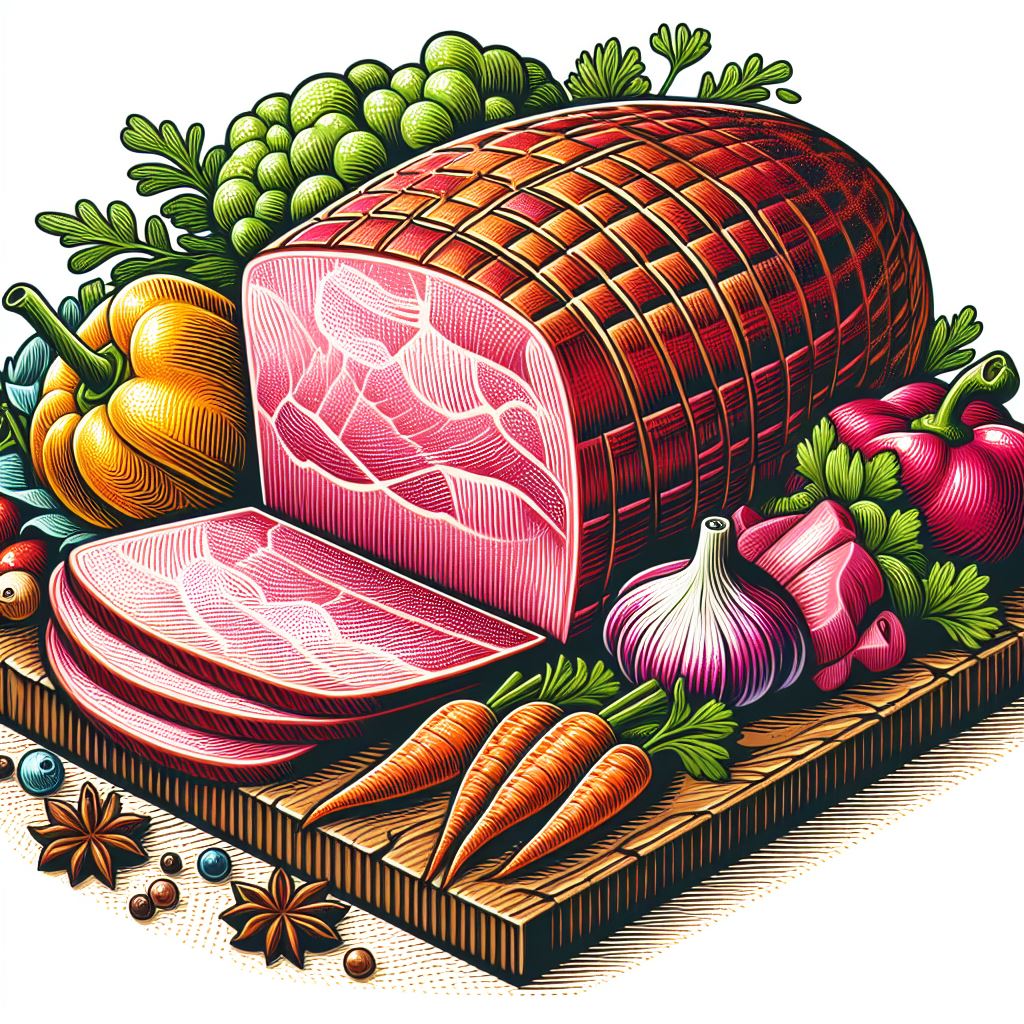In the realm of pork products, two titans often come to the fore in culinary discussions: Canadian bacon and ham. This comparison aims to dissect the nuances that distinguish these two popular food choices, providing a comprehensive look into their texture, nutrition, and overall culinary application.
Definitions and Primary Differences
Canadian Bacon, often mistakenly identified as bacon, is closer to what many would classify as ham. It is made from the lean, eye portion of pork loin located on the back of the pig. Canadian bacon is typically smoked and fully cooked, boasting a texture that is more similar to a thickly sliced ham than to the streaky bacon familiar to American breakfast tables.
Ham, on the other hand, comes from the hind leg of the pig and can be sold raw, cured, or cooked. It presents a wider variety of textures and flavors, influenced by factors such as the curing process, cooking method, and regional seasoning preferences.
Table of Contents
Texture and Flavor Profile
| Attribute | Canadian Bacon | Ham |
|---|---|---|
| Texture | Firm and slightly chewy | Varies from tender to very firm |
| Flavor | Mild and slightly sweet, with a hint of smokiness | Rich and salty, with varying levels of sweetness based on the cure |
| Common Uses | Breakfast servings, pizza toppings, sandwiches | Main course dishes, sandwiches, holiday meals |
Canadian bacon offers a consistent texture due to its uniform cut and preparation method. Its flavor is subtle, making it a versatile ingredient that complements rather than overwhelms dishes. Ham provides a richer taste experience, with the potential for a wider array of textures ranging from the delicate thin slices of prosciutto to the robust chew of a country ham.
Nutritional Comparison
The nutritional content of Canadian bacon and ham can vary widely based on preparation and serving size. However, a general comparison reveals key differences:
| Nutrient | Canadian Bacon (100g serving) | Ham (100g serving) |
|---|---|---|
| Calories | 157 | 163 |
| Protein (g) | 20.3 | 18.2 |
| Fat (g) | 6.3 | 5.5 |
| Sodium (mg) | 1,200 | 1,500 |
Canadian bacon emerges as a slightly leaner option, with a higher protein content and marginally lower calories and fat. However, it is essential to consider sodium levels, where Canadian bacon often contains less than many types of ham, making it a potentially better choice for those monitoring salt intake.
Culinary Application and Personal Experience
My own ventures into utilizing both Canadian bacon and ham have taught me to appreciate the distinct qualities each brings to the table. Canadian bacon, with its lean texture and mild flavor, excels in dishes where it can provide a meaty substance without overpowering other ingredients, such as in an eggs Benedict or atop a Hawaiian pizza. Ham, with its hearty flavor profile, shines as the centerpiece of a meal, especially when glazed and roasted for a festive occasion.
Expert Opinions and Statistics
Nutritionists often highlight the importance of considering processed meats’ sodium content in one’s diet. According to the American Heart Association, high intake of sodium can lead to increased blood pressure and heart disease risks. Therefore, when incorporating Canadian bacon or ham into meals, it’s advisable to balance the rest of the dish with low-sodium ingredients.
Furthermore, the versatility of ham in culinary traditions worldwide—from Italian prosciutto to American smoked ham—underscores its global appeal and adaptability. Meanwhile, Canadian bacon’s popularity, particularly in North America, demonstrates its valued role in both traditional and contemporary dishes.
Actionable Tips
- Balance Your Plate: When serving dishes featuring Canadian bacon or ham, include plenty of vegetables to counterbalance the sodium content.
- Mind the Portion Size: Given the nutritional density of both, moderating portion sizes can help maintain a balanced diet.
- Experiment with Flavors: Both meats are excellent vehicles for a variety of spices and herbs, allowing for creative culinary experiments.
Q&A
Q1: If Canadian bacon is from the back and ham is from the leg, does this make Canadian bacon the superior posterior option?
A1: In the grand scheme of culinary anatomy, one might say Canadian bacon has the “back” advantage.
Q2: Can eating Canadian bacon actually make me more polite?
A2: While Canadian bacon itself might not boost your manners, the act of sharing it certainly could.
Q3: Is choosing between Canadian bacon and ham for breakfast the adult version of picking a favorite child?
A3: Absolutely. And just like with children, you’re not supposed to admit you have a favorite.
Q4: If I dream about ham, does that mean I’m spiritually connected to a pig?
A4: It might just mean you’re hungry. Or that you have a deep appreciation for the finer things in life—like a good charcuterie board.
Q5: Would a pig find it offensive if it knew we preferred one part of it over another?
A5: If pigs were privy to our culinary preferences, they might just remind us that every part is valuable… especially the part that goes “oink.”
In conclusion, the choice between Canadian bacon and ham hinges on personal taste preferences, nutritional considerations, and the specific requirements of the dish being prepared. Both offer unique attributes that can enhance a wide range of meals, from simple breakfasts to elaborate dinners. By understanding the distinctions between these two pork products, consumers can make informed decisions that elevate their culinary creations while adhering to their dietary goals.











